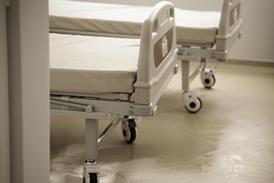Many local NHS hospitals are struggling and they face a number of common pressures and costs, write Janet Dawson and Edward Bramley-Harker
In many sectors smallness is often associated with being inventive, flexible, dynamic and profitable. But in the NHS many local hospitals are struggling.
What is driving the issues at local hospitals and how can organisations respond?
Commonplace challenges
Local hospitals face a number of common pressures. More patients are being treated at home or in the community.
Quality and efficiency are driving the centralisation of specialist services and there is increased competition for profitable elective work.
The cost of isolation
Furthermore, local hospitals – which often serve remote populations – face additional costs related to their isolation including the ability to attract talent and entering adjacent markets in community care.
They lack the economies of scale of larger organisations, something the current construct of the national tariff payment system fails to recognise.
‘Local hospitals need to start with the basics and address inefficiency and poor quality in their organisations’
Local hospitals also face workforce challenges. The Academy of Medical Royal Colleges wants to see surgeons in some specialties doing a minimum number of procedures a year. This drives centralisation of activity and leaves aspirant specialists reluctant to work in local hospitals earlier in their careers.
Innovative transformation
As our NHS@75 work shows, the challenges facing the NHS over the next 10 years mean all providers will have to undergo radical transformation if they are to survive and thrive.
A new model of local hospitals needs to emerge. It will need strong leadership and radical thinking from commissioners, regulators and policy makers, as well as patients and the public.
Most importantly local hospitals themselves need to take action – either individually or together – to address these challenges.
We think that there are a number of things that innovative organisations should do.
First, local hospitals need to start with the basics and address inefficiency and poor quality in their organisations.
Second, they need to decide what they want to be known for. For many this will mean diversifying into new services.
Local hospitals often have a strong local “brand” and they could use this to move into more diverse markets – potentially working in partnership with other sectors. For others it will mean taking a long hard look at what activity needs to stop.
‘Local hospitals themselves need to take action to address challenges’
Third, local hospitals need to show leadership, challenging incremental commissioning changes and developing their own new approaches to patient care and innovative contracting.
Fourth, local hospitals need to network with their bigger brothers and sisters more effectively to benefit from economies of scale.
Finally, local hospitals need to address and voice their lack of scale, and work together more to learn from each other. They can co-design solutions to similar problems, share the costs of investment and influence national policy making. Together, they can make the case for the change that is needed.
We are exploring this agenda in collaboration with innovative local hospitals as part of our NHS@75 programme. What do you think the key issues are and what are the potential solutions? Join the discussion.
Janet Dawson is healthcare lead partner and Edward Bramley-Harker is an economic and policy director at PwC
























No comments yet